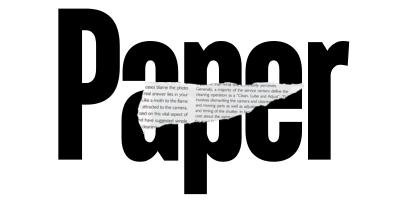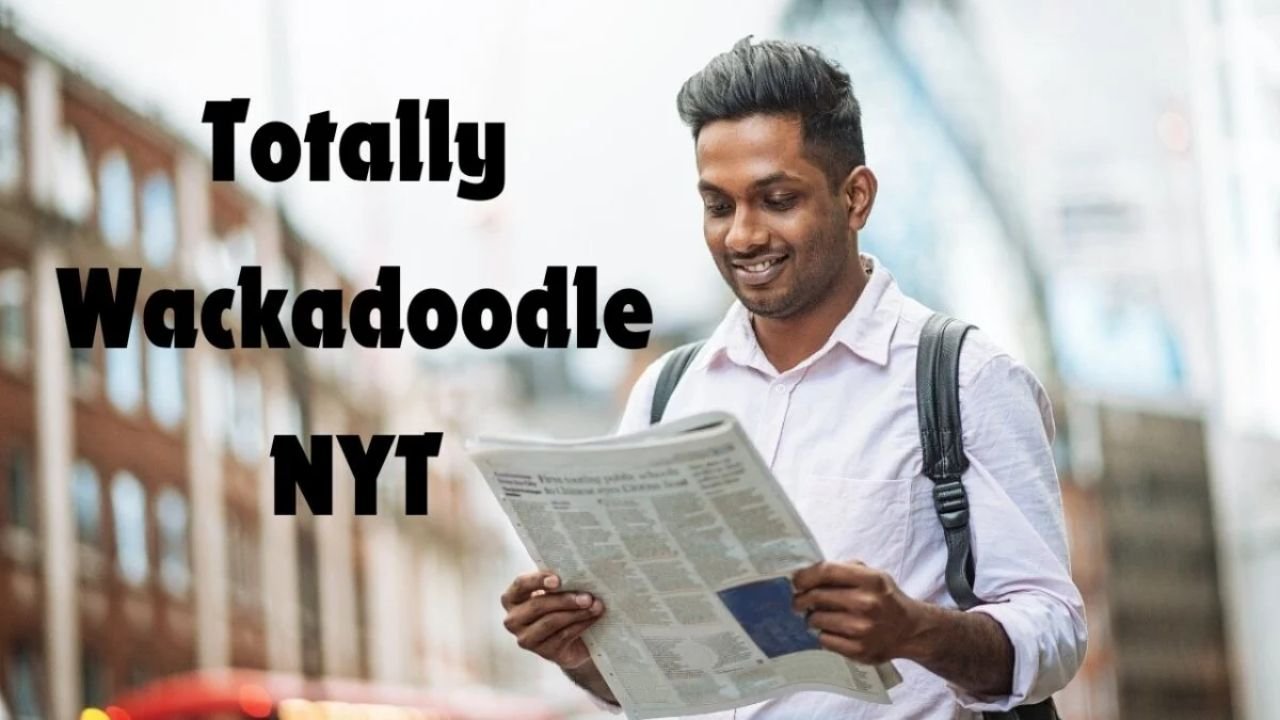Although you may not hear the term “totally wackadoodle” very often, it has become more and more common in a variety of contexts, particularly in casual settings like pop culture, social media, and even some mainstream publications like The New York Times (NYT). You’ve arrived to the correct spot if you’re looking to discover more about this peculiar expression.
In this article, we’re going to dive deep into the meaning, origins, usage, and cultural significance of the term “totally wackadoodle.” We’ll also explore how it’s been used in mainstream media, especially by renowned publications like The New York Times. By the end of this article, you’ll have a solid understanding of this whimsical expression and how it fits into the larger context of modern language and communication.
What Does “Totally Wackadoodle” Mean?
The phrase “totally wackadoodle” is a slang term used to describe something or someone that is completely absurd, crazy, or irrational. It’s a playful and exaggerated way of expressing disbelief or amusement at something that seems nonsensical.
- “Wackadoodle”: This is the core of the phrase. “Wackadoodle” is a blend of “wacky” and “doodle,” where “wacky” means silly or eccentric, and “doodle” adds a whimsical touch. Together, “wackadoodle” suggests something that is beyond ordinary eccentricity—it’s outright kooky.
- “Totally”: When paired with “wackadoodle,” the word “totally” amplifies the intensity, emphasizing that whatever is being described is not just a little crazy, but completely over the top.
Origins of the Phrase
Understanding the roots of “totally wackadoodle” requires a look into the evolution of slang and how language adapts over time. The term “wacky” has been around for decades, used to describe something silly or zany. “Doodle,” often associated with casual or meaningless drawings, has also been a part of the English language for centuries.
- Wacky Origins: The word “wacky” itself comes from the word “whack,” which originally referred to a strike or blow. Over time, “wacky” evolved to describe someone who was offbeat or odd, as if they had been metaphorically “whacked” into a state of silliness.
- Doodle Influence: The word “doodle” has its own history, often referring to spontaneous drawings made without much thought. When added to “wacky,” it lightens the tone, turning the phrase into something more playful and less serious.
The exact origin of “wackadoodle” as a combined term is hard to pin down, but it likely emerged in the late 20th century as part of the broader trend of blending words to create new, vivid expressions.
How the Phrase Became Popular
The rise of “totally wackadoodle” in popular culture can be traced to its use in media, television, and internet culture. The phrase embodies a sense of exaggerated disbelief, which makes it perfect for describing outrageous situations in a humorous way.
- Television and Movies: Shows and films that thrive on quirky humor have embraced terms like “wackadoodle” to describe their more eccentric characters or plot points. The phrase fits perfectly in dialogue that aims to be both entertaining and memorable.
- Internet and Social Media: Platforms like Twitter, Reddit, and Instagram have become breeding grounds for slang and informal language. “Totally wackadoodle” fits the tone of many viral posts, where users share stories or news that seem almost too absurd to be true.
- Memes: The phrase has also been picked up in the world of memes, where exaggeration is key. A “totally wackadoodle” meme might feature an image or video clip that depicts something bizarre or inexplicable, capturing the essence of the term.
Usage in Mainstream Media: The New York Times Example
One of the most interesting aspects of the phrase “totally wackadoodle” is how it has been used in mainstream media, including respected publications like The New York Times. While such outlets are often associated with formal language, the inclusion of a phrase like “totally wackadoodle” can signal a shift towards more relatable and conversational journalism.
- Contextual Usage: The New York Times, known for its rigorous reporting and high editorial standards, occasionally employs informal language to add color to its stories. The use of “totally wackadoodle” in an article would likely be in a context where the subject matter is inherently strange or surprising, and the phrase helps convey that tone to the reader.
- Connecting with Readers: By using a term like “totally wackadoodle,” The New York Times might be aiming to connect with a broader audience, particularly younger readers who appreciate a more casual style of writing. This strategy can make serious journalism more accessible and engaging without compromising the integrity of the reporting.
- Examples in Articles: While specific examples of “totally wackadoodle” in The New York Times might be rare, similar phrases and slang have been noted in their opinion pieces, cultural reviews, and even in headlines. This reflects a growing trend in journalism where the line between formal and informal language is increasingly blurred.
Cultural Significance of the Phrase
The phrase “totally wackadoodle” is more than just a piece of slang; it reflects larger cultural trends in how we communicate. It’s a reminder that language is constantly evolving and that the words we use say a lot about the society we live in.
- Humor and Exaggeration: In a world where news can often be overwhelming, phrases like “totally wackadoodle” provide a way to inject humor into the conversation. They allow people to acknowledge the absurdity of a situation without taking it too seriously.
- Informalization of Language: The increasing use of informal language in traditionally formal settings, like news outlets, is part of a broader trend towards casual communication. This shift is particularly noticeable in digital spaces, where the boundaries of traditional grammar and vocabulary are often stretched.
- Generational Language: The popularity of terms like “totally wackadoodle” can also be seen as part of the linguistic gap between generations. Younger people are more likely to embrace new slang, while older generations might find it puzzling or even annoying. However, when a phrase like this enters mainstream media, it often signals that it has crossed generational lines.
How to Use “Totally Wackadoodle” in Conversation
If you’re looking to incorporate “totally wackadoodle” into your own vocabulary, it’s important to know how and when to use it. Here are some tips:
- Describing Crazy Situations: The phrase is perfect for those moments when you encounter something that defies logic. For example, “The plot twist in that movie was totally wackadoodle!”
- Reacting to Absurd News: In a world full of strange headlines, “totally wackadoodle” is a great way to express disbelief. For instance, “Did you hear about that conspiracy theory? It’s totally wackadoodle.”
- Adding Humor to Conversations: If you want to lighten the mood, throwing in a “totally wackadoodle” can make your point more playful. For example, “I tried to bake a cake, but it turned out totally wackadoodle.”
The Role of Language in Shaping Culture
Language plays a crucial role in shaping our perceptions of the world around us. The adoption of phrases like “totally wackadoodle” reflects how we process and respond to the events and trends in our lives.
- Language as a Reflection of Society: The words we choose to use often mirror the societal issues we face. When people use a term like “totally wackadoodle,” they might be commenting on the absurdity or unpredictability of modern life.
- Slang and Social Identity: Slang terms like “totally wackadoodle” can also be a way of signaling belonging to a particular social group. Whether it’s a generation, a subculture, or an online community, the language we use helps define who we are.
- Evolving Language: As society changes, so does language. New words and phrases emerge to describe new phenomena, and old words take on new meanings. “Totally wackadoodle” is a perfect example of this linguistic evolution.
You May Also Like: BestAdvise4u.com News: Your One-Stop Destination for Quality Journalism
Conclusion
Although the term “totally wackadoodle” may sound silly and enjoyable, it also provides an intriguing look at how language changes and reflects our society. This oddball term has made a comeback into the modern language, thanks to its humorous beginnings and usage in popular culture. “Totally wackadoodle” is an excellent illustration of how a straightforward statement can captivate the interest of a generation, regardless of your preference for slang or level of curiosity about language.
FAQs
What does “totally wackadoodle” mean?
“Totally wackadoodle” is a slang expression used to describe something or someone that is completely absurd, crazy, or irrational. The word “wackadoodle” is a playful combination of “wacky” (meaning silly or eccentric) and “doodle,” which adds a whimsical touch. The word “totally” amplifies the intensity, suggesting that something is entirely or extremely nonsensical.
Where did the phrase “totally wackadoodle” originate?
The exact origins of “totally wackadoodle” are difficult to trace, but the term likely emerged in the late 20th century. It’s derived from the word “wacky,” which has been used for decades to describe something silly or offbeat, combined with “doodle.” The phrase has gained popularity in informal settings, including social media and pop culture.
How is “totally wackadoodle” used in conversation?
“Totally wackadoodle” is used to express disbelief or describe something incredibly strange or irrational. It’s often used in a humorous or exaggerated manner. For example, if you encounter a bizarre news story or a confusing situation, you might say, “That’s totally wackadoodle!”
Why has “totally wackadoodle” been used in mainstream media like The New York Times?
Mainstream media outlets, including The New York Times, occasionally use informal language like “totally wackadoodle” to connect with readers in a more relatable and conversational tone. This kind of language can make serious topics more engaging and accessible, especially to younger audiences who appreciate a casual writing style.
Is “totally wackadoodle” a commonly used phrase?
While “totally wackadoodle” is not an everyday phrase for everyone, it has become more popular in recent years, particularly in informal online spaces and among people who enjoy using playful or exaggerated language. Its usage reflects the ongoing evolution of slang and how language adapts to cultural trends.











